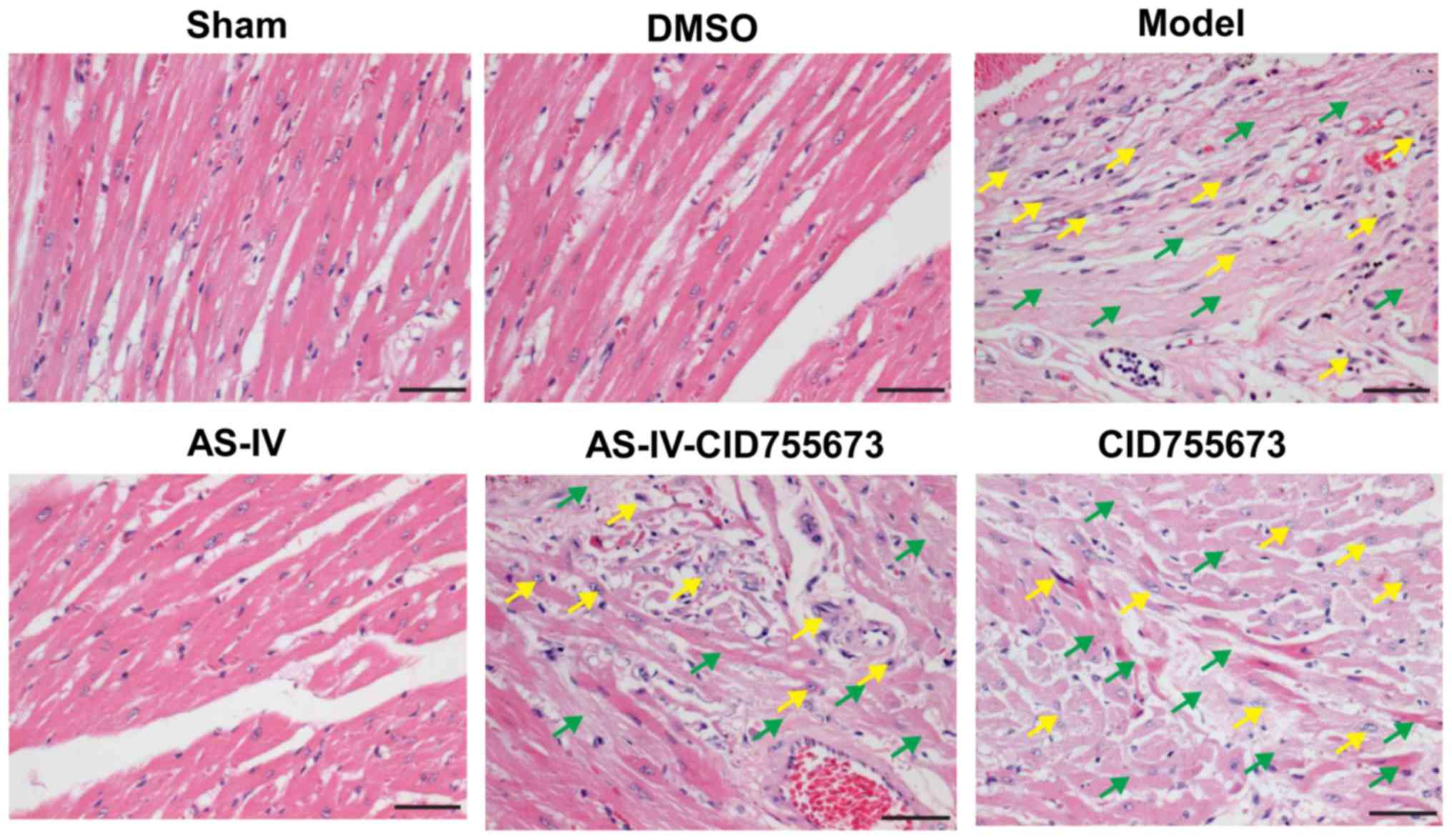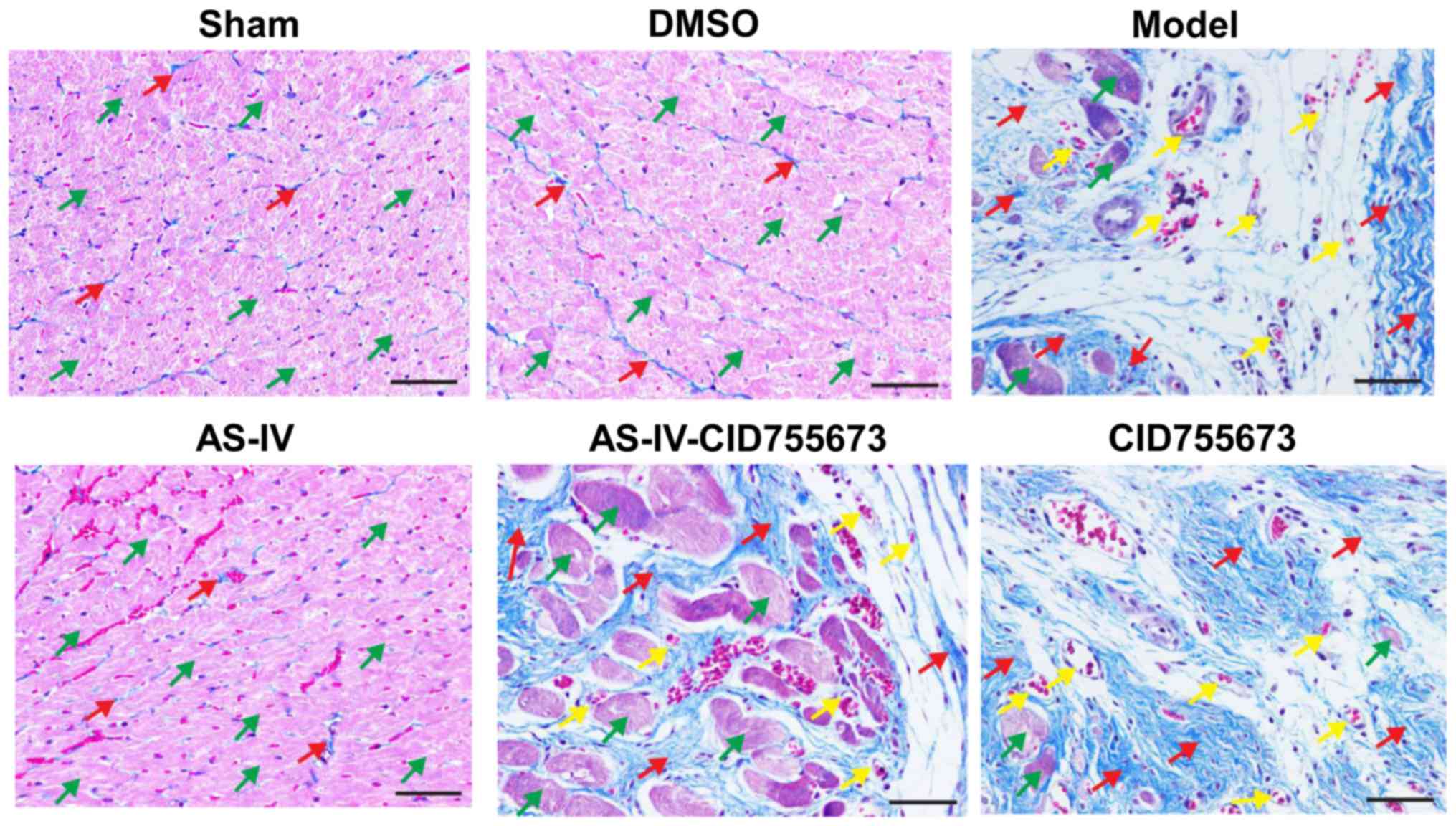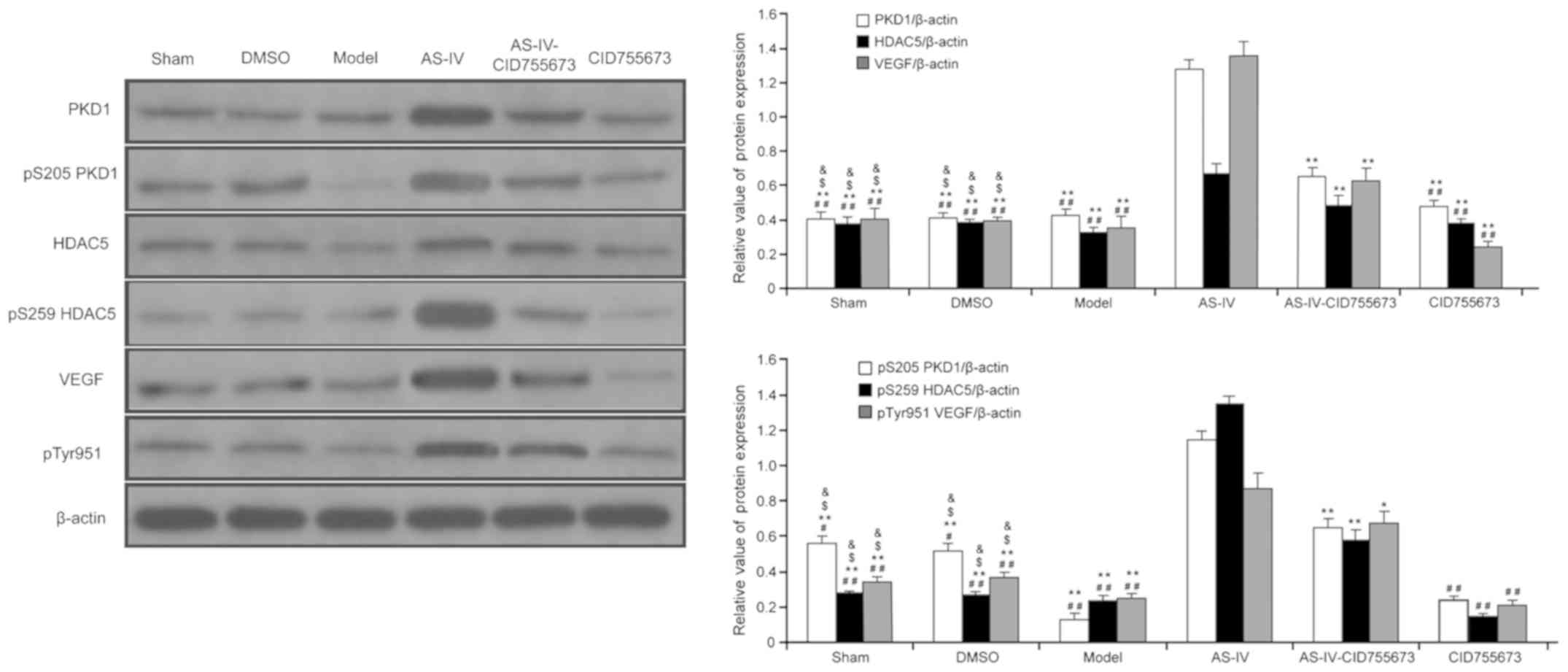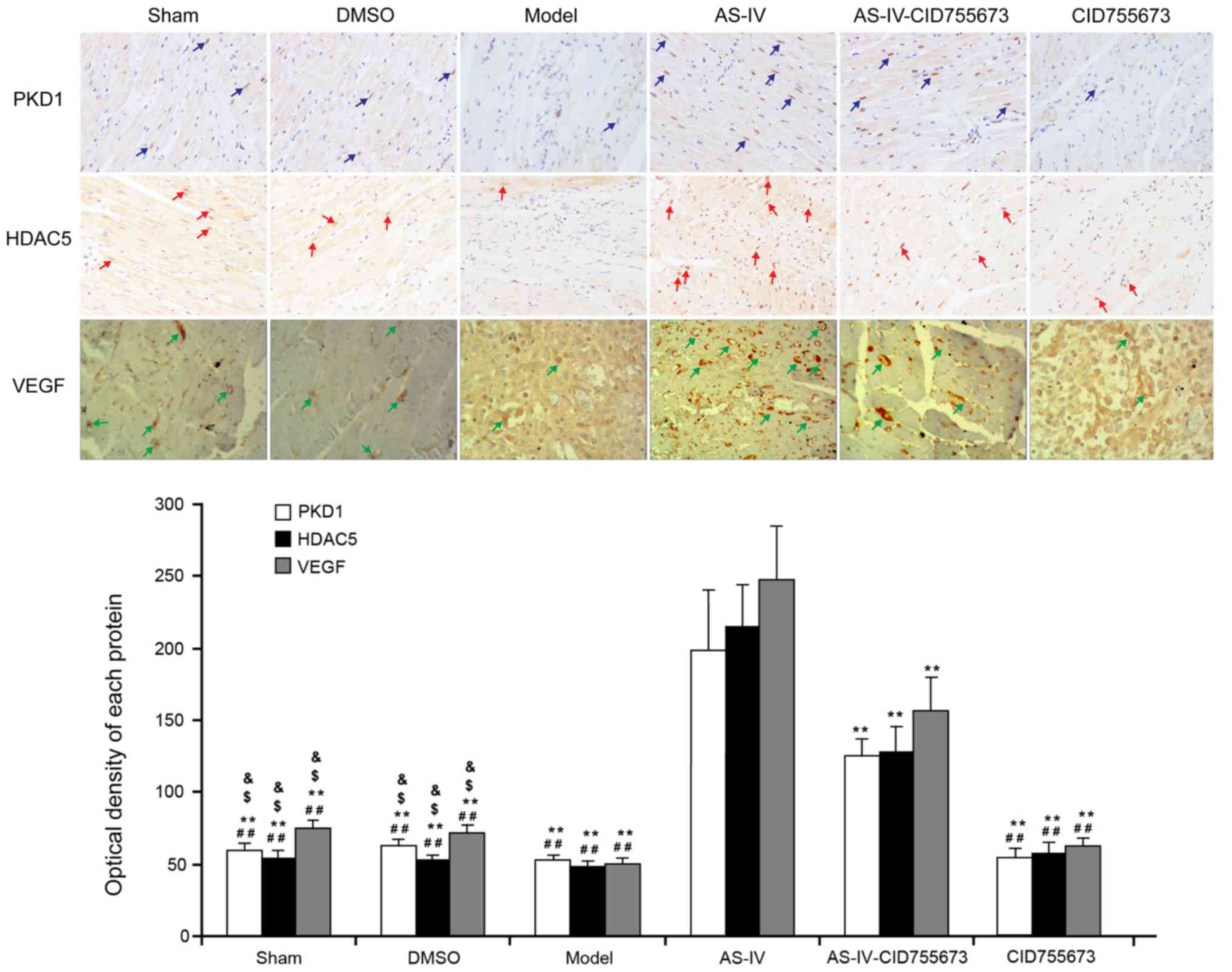|
1
|
Zuin M, Rigatelli G, Fogato L, Faggian G,
Zuliani G and Roncon L: Massive myocardial infarction due to the
complete occlusion of the left anterior descending coronary artery
after blunt chest trauma. Cardiovasc Revasc Med. 19:810–811. 2018.
View Article : Google Scholar : PubMed/NCBI
|
|
2
|
Fan ZG, Qu XL, Chu P, Gao YL, Gao XF, Chen
SL and Tian NL: MicroRNA-210 promotes angiogenesis in acute
myocardial infarction. Mol Med Rep. 17:5658–5665. 2018.PubMed/NCBI
|
|
3
|
Zhou XL, Zhu RR, Liu S, Xu H, Xu X, Wu QC
and Liu JC: Notch signaling promotes angiogenesis and improves
cardiac function after myocardial infarction. J Cell Biochem.
119:7105–7112. 2018. View Article : Google Scholar : PubMed/NCBI
|
|
4
|
Patan S: Vasculogenesis and angiogenesis.
Cancer Treat Res. 117:3–32. 2004. View Article : Google Scholar : PubMed/NCBI
|
|
5
|
di Blasio L, Droetto S, Norman J,
Bussolino F and Primo L: Protein kinase D1 regulates VEGF-A-induced
alphavbeta3 integrin trafficking and endothelial cell migration.
Traffic. 11:1107–1118. 2010. View Article : Google Scholar : PubMed/NCBI
|
|
6
|
Yu D, Chen W, Ren J, Zhang T, Yang K, Wu G
and Liu H: VEGF-PKD1-HDAC7 signaling promotes endothelial
progenitor cell migration and tube formation. Microvasc Res.
91:66–72. 2014. View Article : Google Scholar : PubMed/NCBI
|
|
7
|
Evans IM and Zachary IC: Protein kinase D
in vascular biology and angiogenesis. Iubmb Life. 63:258–263. 2011.
View Article : Google Scholar : PubMed/NCBI
|
|
8
|
Mao BY, Liu N, Yang L, Xu GC and Ye SS:
Protein kinase D1 (PKD1) promotes angiogenesis following myocardial
infarction via vascular endothelial growth factor (VEGF) pathway.
Int J Clin Exp Med. 10:10528–10534. 2017.
|
|
9
|
Matthews SA, Liu P, Spitaler M, Olson EN,
McKinsey TA, Cantrell DA and Scharenberg AM: Essential role for
protein kinase D family kinases in the regulation of class II
histone deacetylases in B lymphocytes. Mol Cell Biol. 26:1569–1577.
2006. View Article : Google Scholar : PubMed/NCBI
|
|
10
|
Ha CH and Jin ZG: Protein kinase D1, a new
molecular player in VEGF signaling and angiogenesis. Mol Cells.
28:1–5. 2009. View Article : Google Scholar : PubMed/NCBI
|
|
11
|
Ha CH, Wang W, Jhun BS, Wong C, Hausser A,
Pfizenmaier K, McKinsey TA, Olson EN and Jin ZG: Protein kinase
D-dependent phosphorylation and nuclear export of histone
deacetylase 5 mediates vascular endothelial growth factor-induced
gene expression and angiogenesis. J Biol Chem. 283:14590–14599.
2008. View Article : Google Scholar : PubMed/NCBI
|
|
12
|
Venardos K, De Jong KA, Elkamie M, Connor
T and McGee SL: The PKD inhibitor CID755673 enhances cardiac
function in diabetic db/db mice. PLoS One. 10:e01209342015.
View Article : Google Scholar : PubMed/NCBI
|
|
13
|
Sharlow ER, Giridhar KV, LaValle CR, Chen
J, Leimgruber S, Barrett R, Bravo-Altamirano K, Wipf P, Lazo JS and
Wang QJ: Potent and selective disruption of protein kinase D
functionality by a benzoxoloazepinolone. J Biol Chem.
283:33516–33526. 2008. View Article : Google Scholar : PubMed/NCBI
|
|
14
|
Yuan J, Liu Y, Tan T, Guha S, Gukovsky I,
Gukovskaya A and Pandol SJ: Protein kinase d regulates cell death
pathways in experimental pancreatitis. Front Physiol. 3:602012.
View Article : Google Scholar : PubMed/NCBI
|
|
15
|
Liu N, Yang L, Mao BY, XU GC and YE SS:
Promoting angiogenesis effect of astragali radix extract on
myocardium of rats with myocardial infarction. Chin J Exp Tradit
Med Formulae. 19:92–96. 2015.
|
|
16
|
Liu W, Bing Y, Yang L, Xu G, Ye S, Zhang P
and Zhang Y: Effect of Astragalus membranaceus L. extract on rat
bone marrow-derived endothelial progenitor cells. Tianjin yi yao za
zhi. 10:1093–1096. 2015.
|
|
17
|
Yu JM, Zhang XB, Jiang W, Wang HD and
Zhang YN: Astragalosides promote angiogenesis via vascular
endothelial growth factor and basic fibroblast growth factor in a
rat model of myocardial infarction. Mol Med Rep. 12:6718–6726.
2015. View Article : Google Scholar : PubMed/NCBI
|
|
18
|
Zhang L, Liu Q, Lu L, Zhao X, Gao X and
Wang Y: Astragaloside IV stimulates angiogenesis and increases
hypoxia-inducible factor-1α accumulation via phosphatidylinositol
3-kinase/Akt pathway. J Pharmacol Exp Ther. 338:485–491. 2011.
View Article : Google Scholar : PubMed/NCBI
|
|
19
|
Luo KQ, Long HB and Xu BC: Reduced
apoptosis after acute myocardial infarction by simvastatin. Cell
Biochem Biophys. 71:735–740. 2014. View Article : Google Scholar
|
|
20
|
Yang Y, Chin A, Zhang L, Lu J and Wong RW:
The role of traditional Chinese medicines in osteogenesis and
angiogenesis. Phytother Res. 28:1–8. 2014. View Article : Google Scholar : PubMed/NCBI
|
|
21
|
Li H, Wan H, Xia T, Chen M, Zhang Y, Luo X
and Li X: Therapeutic angiogenesis in ischemic muscles after local
injection of fragmented fibers with loaded traditional Chinese
medicine. Nanoscale. 7:13075–13087. 2015. View Article : Google Scholar : PubMed/NCBI
|
|
22
|
Wang SG, Xu Y, Chen JD, Yang CH and Chen
XH: Astragaloside IV stimulates angiogenesis and increases nitric
oxide accumulation via JAK2/STAT3 and ERK1/2 pathway. Molecules.
18:12809–12819. 2013. View Article : Google Scholar : PubMed/NCBI
|
|
23
|
Chen X, Peng LH, Shen YH, Li N, Wei W, Yu
L, Li QM, Liang WQ and Gao JQ: Astragaloside IV-loaded
nanoparticle-enriched hydrogel induces wound healing and anti-scar
activity through topical deliver. Int J Pharm. 447:171–181. 2013.
View Article : Google Scholar : PubMed/NCBI
|
|
24
|
Zhang L, Yang Y, Wang Y and Gao X:
Astragalus membranaceus extract promotes neovascularisation by VEGF
pathway in rat model of ischemic injury. Pharmazie. 66:144–150.
2011.PubMed/NCBI
|
|
25
|
Han L, Liu N, Yang L, Mao Y and Ye SS:
Astragalus membranaceus extract promotes angiogenesis by inducing
VEGF, CD34 and eNOS expression in rats subjected to myocardial
infarction. Int J Clin Exp Med. 9:5709–5718. 2016.
|
|
26
|
Evans IM, Bagherzadeh A, Charles M,
Raynham T, Ireson C, Boakes A, Kelland L and Zachary IC:
Characterization of the biological effects of a novel protein
kinase D inhibitor in endothelial cells. Biochem J. 429:565–572.
2010. View Article : Google Scholar : PubMed/NCBI
|
|
27
|
Wang S, Li X, Parra M, Verdin E,
Bassel-Duby R and Olson EN: Control of endothelial cell
proliferation and migration by VEGF signaling to histone
deacetylase 7. Proc Natl Acad Sci USA. 105:7738–7743. 2008.
View Article : Google Scholar : PubMed/NCBI
|
|
28
|
Liu N, Yang L, Mao BY and Zhang LF: The
role of protein kinase D1 in angiogenesis in rat bone marrow
derived endothelial progenitor cells. Chin J Pharmacol.
31:1259–1263. 2015.
|
|
29
|
Lavalle CR, Bravo-Altamirano K, Giridhar
KV, Chen J, Sharlow E, Lazo JS, Wipf P and Wang QJ: Novel protein
kinase D inhibitors cause potent arrest in prostate cancer cell
growth and motility. BMC Chem Biol. 10:52010. View Article : Google Scholar : PubMed/NCBI
|














